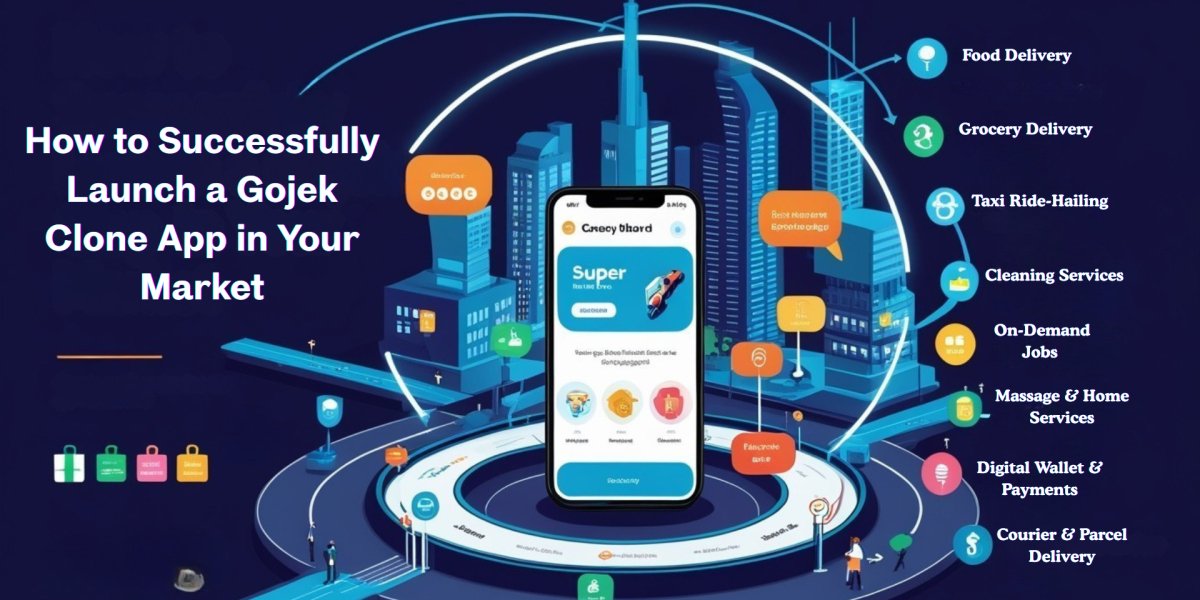Enterprise Iot – Benefits, Common Use Cases, And Challenges
- By Usama Wajeeh
- 13-11-2024
- Internet of Things

The Internet of Things (IoT) has become a highly transformative technology in recent years with widespread impact on how businesses around the world are operated. The IoT makes it possible to connect everyday objects to the internet and collect and analyze huge amounts of data, delivering unprecedented insight and opportunity for innovation.
Enterprise IoT turns everyday operations into a network of data driven insights by allowing businesses to connect things across their machinery, vehicles, and equipment through smart sensors and devices, thus turning them into IoT. Real time information on how assets are being used, their performance and their locations is collected by these sensors, so companies can uncover inefficiencies; predict maintenance needs; and optimize workflows. The use of this technology rolls out businesses from the reactive to the proactive decision making stage and facilitates smooth operations as well as increased productivity.
While consumer IoT devices are typically for personal use, such as a smart home, Enterprise IoT focuses on the scale associated with large-scale commercial and industrial use. A McKinsey report states that the IoT could create between $4 trillion and $11 trillion in economic value in 2025, and says nearly two thirds of that value would come from B2B applications, such as Enterprise IoT. But implementing this isn’t easy, since advanced analytics and strong cybersecurity measures, and with seamless integration into existing systems, are needed for data protection and business functionality.
Benefits of Enterprise IoT
Here are the key benefits of Enterprise Iot:
Operational Efficiency
The greatest potential of Enterprise Iot is the optimization of activities. Real-time tangible assets and resources include equipment and processes as well as resources connected to devices. It minimizes possibilities of error and enhances responsiveness to emerging problems before they reach expensive proportions.
By implementing this predictive maintenance approach, GE and their customers evidently saved as many as 20% of their maintenance costs and brought unplanned downtime even down to 30%, bearing witness to the real benefits of IoT on making operations more efficient.
Cost Savings
These studies also indicate that, with enhanced efficiency, there are always cost savings. Engaging efficiency in operations, productive time is conserved. Therefore, overall cost declined on labor, maintenance, and general resource utilization. IoT can also help businesses to save energy.
One of the notable examples is smart lighting and HVAC systems that manage and alter the work of a place, such as at the Empire State Building in New York City. By retrofitting the building’s lighting and HVAC systems using IoT sensors, approximately 38% energy saving, with a cost reduction of almost $4.4 million a year was realized.
Data-Driven Insights
Smart things or IoT devices generate a huge volume of data. The businesses can then use this data in the improvement of customer understanding, employability, equipment effectiveness, and so on. Using higher-level analysis, this data becomes much more useful as it can show complicated trends and patterns.
For instance, customer data science company Dunnhumby has solutions that allow retailers to store and analyze data from IoT devices such as smart shelves and point of sales register.
Improved Customer Experience
As to the corporate level, IoT also has its impact on improving customers’ experience. For example, IoT can be used in retail stores in order to automatically check the amount of store inventory. This helps to avoid situations where an item has run out of stock, uncontrolled situations and lead to loss of customers.
A good example is Marriott International, which has incorporated IoT technology in their operations. And their 'smart rooms' allow guests to control room settings via a mobile app which creates a personalized environment Facilities such as smart thermostat, room lighting, and entertainment systems can adapt to a guest’s preferences on their own. The use of this innovation has been proven to increase guest satisfaction and thus positive reviews, as well as increased loyalty.
Enhanced Safety and Security
IoT can help in enhancing the safety at the workplace since it’ll help in real-time monitoring the software development agency environment. In factory or construction camps, gasses, temperature can be monitored and if there is a problem for instance leakages the sensor will alert the relevant authorities. This allows an event to occur which may help in responding to an accident.
IoT can also increase security technology and public security through smart cameras, electronic door locks, and good alarms to ensure that the businesses adopt adequate control on their premises.
The Common Uses of Enterprise Iot
Smart Manufacturing
By far, the manufacturing industry is actively utilizing IoT technologies. In smart factories, IoT is used in operating the production line, tracking the machines and monitoring the stock.
There is one big benefit here: predictive maintenance. Machines monitor performance and give signals to personnel when a component is due for change.
This helps in cutting the duration by the machines in between the periods of production. This also helps in the machine's longevity.
Supply Chain and Logistics
The Internet of Things has emerged as a disruptive technology affecting Supply Chain Management. Using IoT, businesses can monitor the location of consignments and the condition in which the goods are being transported.
For example, temperature in a refrigerated truck can be measured using sensors and the user gets an alert when the temperature is either too high or too low. Real-time information in stock levels is also possible through IoT which assists companies in having the right stocks all the time.
Smart Buildings
Measured by the degree of IoT integration, business structures have been growing wiser progressively. Energy can measure and monitor consumption of electricity. These systems increase the performance of buildings in terms of efficiency and security.
IoT can also improve the comfort of employees in offices. For instance, one of them may involve a change of height or light for instance, smart desks.
Healthcare
The healthcare industry is employing IoT in some very creative manners. Using technology, hospitals can follow up on medical equipment, keep tabs on patients, and perform monotonous functions. Wearable devices are another giant part of this.
With IoT activewear, patient’s vital signs such as heart rate or blood pressure are recorded, and doctors can remotely oversee the patients. This can bring about improved diagnosis as well as outcome on the patients’ side of the equation.
Retail
There is evidence of how most of the retailers are leveraging the IoT to develop individual shopping experiences. Smart shelves keep important information on the required stocks and there is a notification when the required stock level is reached.
IoT devices also collect information about the customers, for instance, which sections of the store they take most of their time in. It assists retailers in knowing the best way to arrange stores and sell their merchandise.
Challenges of Enterprise IoT
Here are a few of the most insurmountable barriers that can be met on the way by businesses.
Data Security and Privacy
As more than millions devices get connected, it becomes a point to worry about the security of such data. Every single IoT device is a potential first crack for hackers. There are always dangers to confidential information in organizations due to failure to employ adequate security measures.
Stemming the loss of this data is very critical, more so to sectors such as healthcare and finance. Secure data transmission and applying a dense level of authentication are significant measures securing IoT connections.
Interoperability
A huge number of IoT devices exist in the market and are produced by different manufacturers. They each have incompatible communication interfaces and software environments. This creates a challenge when one is trying to address how they get to co-operate and execute their tasks in harmony. Inadequate standards may act as a hindrance to the deployment process and also raise the expenses involved.
It is also important for business to ensure that its IoT system can work with other technology systems and are compatible.
Cost of Implementation
On the other hand, on the side of its benefits, IoT can help to cut a great deal of expenses in the long term. However, the capital investment could be high. A lot of money can be spent on implementing IoT devices, installing supplies, and educating workers. SMES especially may not be able to justify the use of the funds needed to finance the project.
IoT projects are quite new, and firms require significant evaluation of these investment projects before embarking on implementing them.
Scalability
In the course of business development, the numbers of IoT devices employed by companies will also increase. The IoT solutions should be scaled up and it may sometimes be very difficult and very costly. Companies have to design for the increased data load and device control for their organizations.
Probably the hardest aspect of scalability is best illustrated in businesses such as manufacturing. This is where hundreds of devices may be required to be incorporated into a business in the future.
Data Overload
There is always a significant amount of data that is created by IoT devices. Sometimes, businesses might be overwhelmed with the analysis, and this is where appropriate modern-day tools come handy. Businesses cannot afford to be overwhelmed by big data; they have to build the necessary analytical tools and hire or train people to run them.
Conclusion
The potential for enterprises to leverage IoT is immense, offering benefits like increased productivity, enhanced operational efficiency, and improved customer experiences. With IoT as a means of collecting, analyzing, and automating data in real-time, new opportunities for business development arise and companies can make relevant decisions. Sub-top findings of this paper include; This can lead to improvements in cost efficiency, resource utilization and improved client satisfaction on services delivered.
All the same, IoT has its drawbacks that are relevant to anyone planning on implementing such systems: This is one of the major issues which this project needs to address, being data protection. Since IoT devices are creating and sending out so much data, there is vulnerability to threats and hacking.
The major drawback of IoT implementation is the rather high cost of deploying these solutions. This is such a cost as the price to buy IoT devices, put up structures as well as the cost of the systems being put in place. Small to mid-sized enterprises may have problems coming up with such amounts since these are initial costs of adopting IoT, hence a cost benefit analysis should be done before embarking on IoT.
However, such adaptations pose challenges because IoT must seamlessly being incorporated into current operations while being scalable. IoT networks that companies incorporate must have the ability to scale up with the increasing size of the business so that incorporating new devices and managing traffic does not affect current operational procedures.
There are some tips any business that wants to adopt IoT into its operations should consider early enough. It is possible to plunge ahead with IoT implementation without a vision of what companies are attempting to achieve, only to find that resources have been squandered, that implementation attempts have failed, and that the infrastructure created has significant security flaws.
Furthermore, a complete understanding of how IoT would change different areas of the business is also important. This means understanding how IoT will create value to the customer service, supply chain and internal operations as well as the technical and operational risks that may come with it.
When executed properly, the Enterprise IoT should become a primary source of innovation and competitiveness as companies struggle to keep up with the fast pace of digitization.


.jpg)

.jpg)
